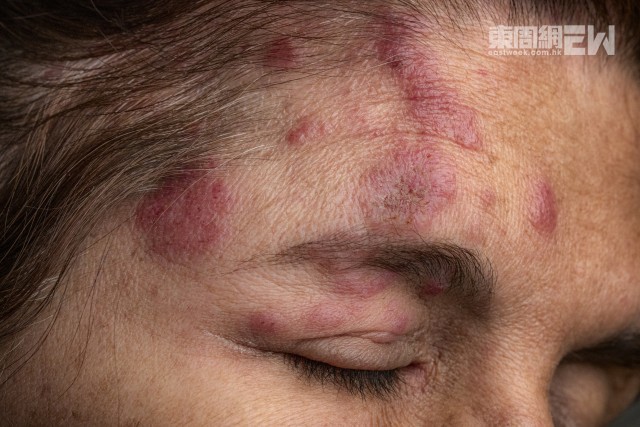Dr. Wong Chi Keung
Are Elderly More Susceptible to Shingles?
Many individuals claim that shingles pain surpasses the intensity of childbirth, describing sensations akin to needle pricks, burning, and electric shocks. Statistical data indicates that 97% of Hong Kong residents over 39 years of age have experienced chickenpox infection. International studies reveal that one in three individuals will develop shingles (caused by the varicella-zoster virus) in their lifetime, with 50% of those aged 85 and above experiencing the condition.
A survey conducted in early 2024 by the Hong Kong Society of Infectious Diseases, Hong Kong Skin Health Foundation, and Society of Hospital Pharmacists of Hong Kong encompassed 2,743 adults aged 18 and above. Over 30% of respondents reported experiencing shingles, with more than 60% of elderly patients suffering from prolonged symptoms and post-herpetic complications, including neuralgia, for over a month, impacting their daily activities and sleep patterns.
Dr. Wong Chi-keung, a neurosurgical specialist, explains that shingles, medically termed as herpes zoster, manifests as painful, band-like red rashes with fluid-filled blisters. The causative agent is the varicella-zoster virus, which initially causes chickenpox. Following chickenpox recovery, the virus remains dormant in the nervous system for years. Reduced immunity, whether due to aging or stress, can trigger shingles recurrence in various body regions.
Common infection sites include the head, neck, chest, waist, and extremities, depending on the affected nerve pathway. Initially, infected areas exhibit itching or mild pain with burning sensations, followed by rash development within 1-3 days. The rashes evolve into blisters, spreading in a band-like pattern. These blisters persist for 1-14 days, potentially developing purulent or hemorrhagic content. Subsequently, the blisters rupture or atrophy, forming scabs over 2-3 weeks. Pain persists until rash resolution, with some patients requiring long-term pain management even months after complete healing.
Debunking the Myth of Fatal Truncal Shingles
Dr. Wong addresses the urban myth that shingles encircling the trunk is fatal: "Herpes zoster typically follows sensory nerve distribution patterns, rarely completely encircling the body due to the segmental and bilateral nature of neural distribution. Apparent circumferential patterns usually indicate multiple nerve involvement. While generally not directly fatal, shingles can cause severe complications in immunocompromised individuals, such as cancer patients or those with AIDS, potentially becoming life-threatening."
Though shingles isn't immediately life-threatening, research indicates that patients face an 80% increased risk of stroke within one month after onset, and a 60% higher risk of myocardial infarction within one week. Additionally, ophthalmic shingles can cause corneal damage leading to blindness.
Dr. Wong explains that shingles, being a viral infection, can trigger inflammatory responses. Studies suggest that when the varicella-zoster virus reactivates in nerves, it may cause inflammation in cerebral or cardiac arteries, damaging vessel walls and forming plaques that increase thrombosis risk, potentially leading to stroke or heart attack.
Approximately 10% of shingles cases occur in the upper facial region, including the forehead, nasal tip, and eye area. When the virus infects the ophthalmic branch of the trigeminal nerve (fifth cranial nerve), it results in "ophthalmic shingles," which can cause various severe eye inflammations. Rare complications like retinal necrosis or optic neuritis may lead to vision loss or permanent blindness.
Shingles Vaccine: Preventing Complications and Post-herpetic Neuralgia
For shingles treatment, doctors typically prescribe DNA polymerase inhibitor antiviral medications and ointments for a 7-10 day course. These treatments suppress viral activity, accelerate scab formation, reduce pain, and help prevent or minimize post-herpetic neuralgia. Clinical trials indicate that treatment must begin within the "golden 72 hours" after blister formation for optimal effectiveness. However, these medications may cause side effects such as nausea, headache, dizziness, and abdominal pain. Doctors may also prescribe NSAIDs or paracetamol-containing painkillers. For severe pain, anticonvulsants or opioid analgesics might be prescribed.
Prevention is better than cure! The shingles vaccine is currently the most effective preventive measure, reducing both recurrence risk and severity of symptoms. Data shows the vaccine reduces shingles risk by 97% in individuals aged 50 and above, and provides 87% protection for immunocompromised individuals aged 18 and above. In Hong Kong, residents aged 65 and above can use their healthcare vouchers for vaccination.



Back





